Walking along the new Kumano Kodo Iseji route with an audio guide
Have you ever been on a trip and wanted to know more about the background of a place you visited for the first time, or regretted it when you realized later that you had passed by the highlight? An audio guide has been released that will convey the charm of Kumano Kodo Iseji without leaving any regrets. In this article, we will introduce a new way to enjoy your trip to Magose-togePass and Matsumoto Pass, which are popular among the Kumano Kodo Iseji routes from Ise. This year, which marks the 20th anniversary since it was registered as a World Heritage Site, why not take a walk along Iseji Route with an audio guide?
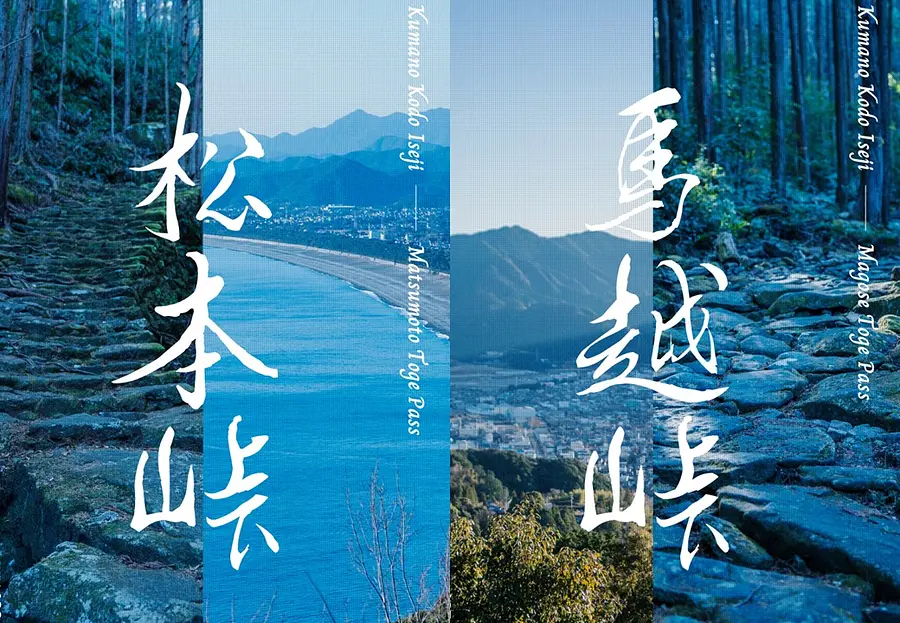
▼Table of contents
- What is Kumano Kodo Iseji?
- A new way to enjoy your trip with your own exclusive guide
- Magose-togePass, stopping in the footsteps of history
- Learn about the “story” of Magose-togePass that unfolds before your eyes.
- Walk along Matsumoto Pass with the people who built this road
- Learn the “story” of Matsumoto Pass that unfolds before your eyes
- About access and parking to Magose-togePass and Matsumoto Pass
- in conclusion
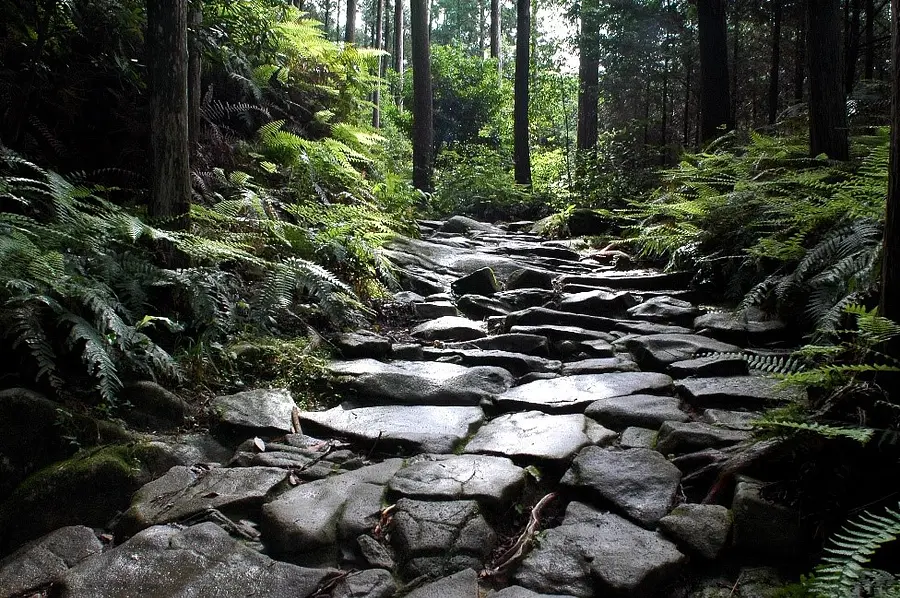
What is Kumano Kodo Iseji?
The Kumano Kodo is a route to visit the three Kumano shrines (Kumano Hongu Taisha, Kumano Hayatama Taisha, Kumano Nachi Taisha). It is registered as a UNESCO World Cultural Heritage Site as a "Sacred Sites and Pilgrimage Routes in the Kii Mountains" (*), including the Kumano Kodo.
Of the five pilgrimage routes on the Kumano Kodo, Iseji is the route from Ise to Kumano Sanzan. Iseji became popular during the Edo period, when the ``Ise Shrine'' and ``Pilgrimage to the Saigoku Thirty-three Places'' became popular among the common people.
(*) "Sacred Sites and Pilgrimage Routes in the Kii Mountain Range"...Three sacred sites: Kumano Sanzan, Yoshino/Omine, and Mt. Koya, and the Kumano Pilgrimage Route (Kumano Kodo), Omine Okugedo, which connects them. It consists of the "Koya Pilgrimage Route" and the "cultural landscape" that surrounds it.
Magose-togePass and Matsumoto Pass, which are popular among the Kumano Kodo Iseji routes, are recommended courses for beginners as they allow you to enjoy a variety of spots, including beautiful scenery and historical sites. This time, I would like to propose a new journey where you can enjoy this course with an audio guide.
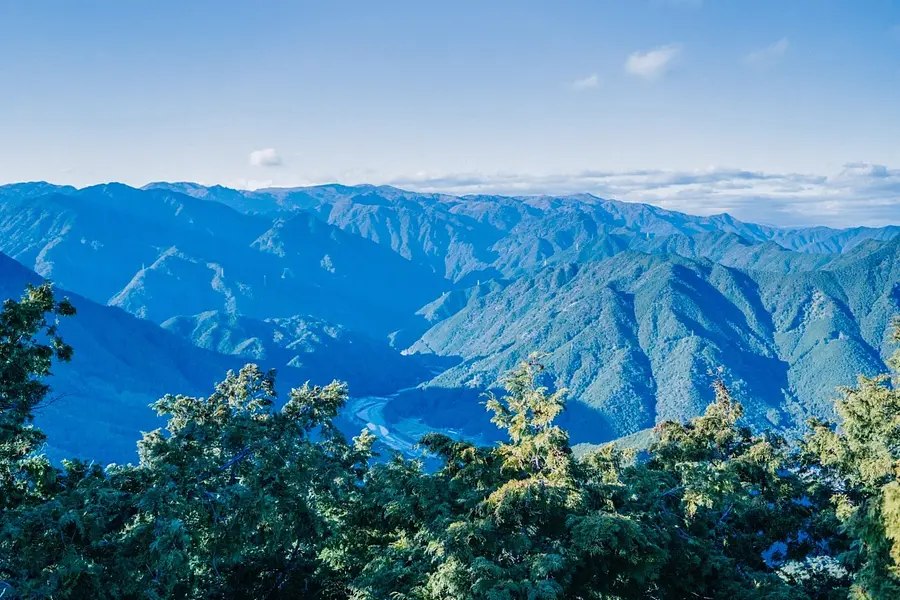
A new way to enjoy your trip with your own exclusive guide
ON THE TRIP, an app that allows you to listen to audio guides on the Kumano Kodo Iseji route, has the theme of "turning every travel destination into a museum", and is based on the theme of "turning every travel destination into a museum". and other cultures. This is a travel guide app that helps you understand things you are interested in while traveling.
The audio guide is easy to use. Launch the downloaded "ON THE TRIP" app and download the spot guide. When you select a spot that interests you and play it back, the app will tell you the history and background of the scenery in front of you using audio, text, and photos. It is a reliable travel companion that will guide you to the highlights of tourist spots in conjunction with GPS, saving you the trouble of researching them yourself.
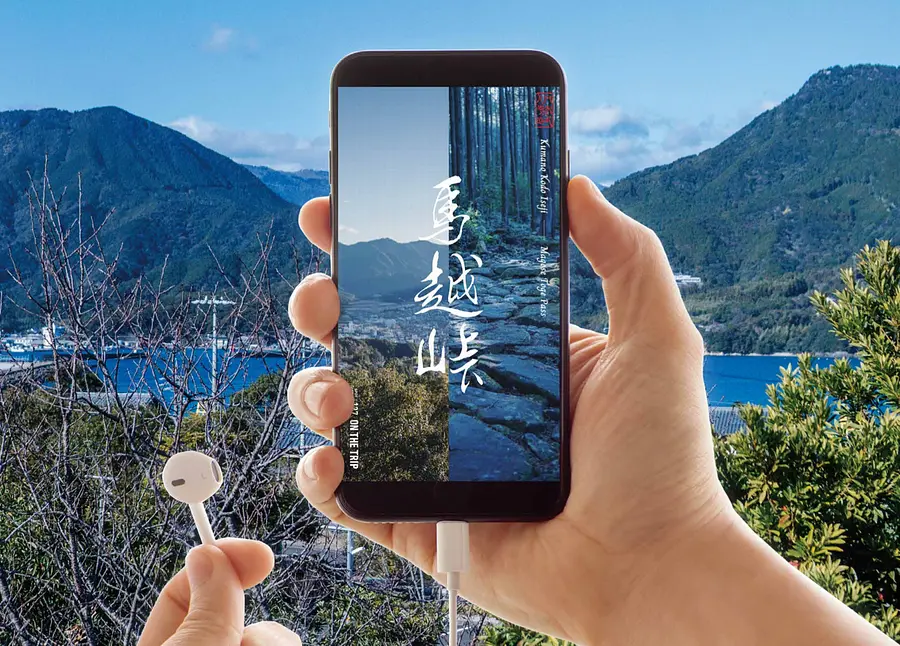
Magose-togePass, stopping in the footsteps of history
Magose-togePass is a pass road that straddles KihokuTown and OwaseCity, and you can fully enjoy the atmosphere of Kumano Kodo, with beautiful stone pavements running through a forest of Owase cypress trees.
There is also a hiking course that leads from the pass where you can enjoy the beautiful cobblestone pavement to a scenic spot where you can see a panoramic view of OwaseCity. At the foot of Magose-togePass, there is Magoshi Park, famous for its cherry blossoms and azaleas, and Owase Shrine, where strange festivals have been held since the Edo period.This mountain pass road offers more than just ancient roads.
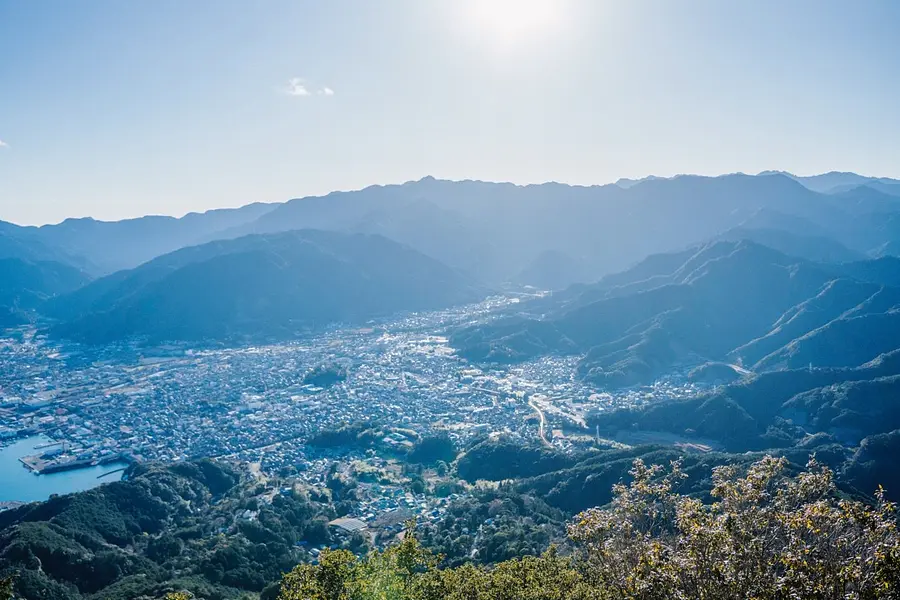
Learn about the “story” of Magose-togePass that unfolds before your eyes.
Let's actually walk Magose-togePass with an audio guide. When you arrive at the starting point, launch the "ON THE TRIP" app and select Magose-togePass. This audio guide starts from the "Magose-togePass Climbing Entrance".
As you walk down this mountain pass, what you see is a large and sturdy cobblestone pavement.
When we think of cobblestone pavement, we often think of something like steps, but the cobblestones at Magose-togePass are smooth and have no steps. Why were the stone pavements in front of me made like this?
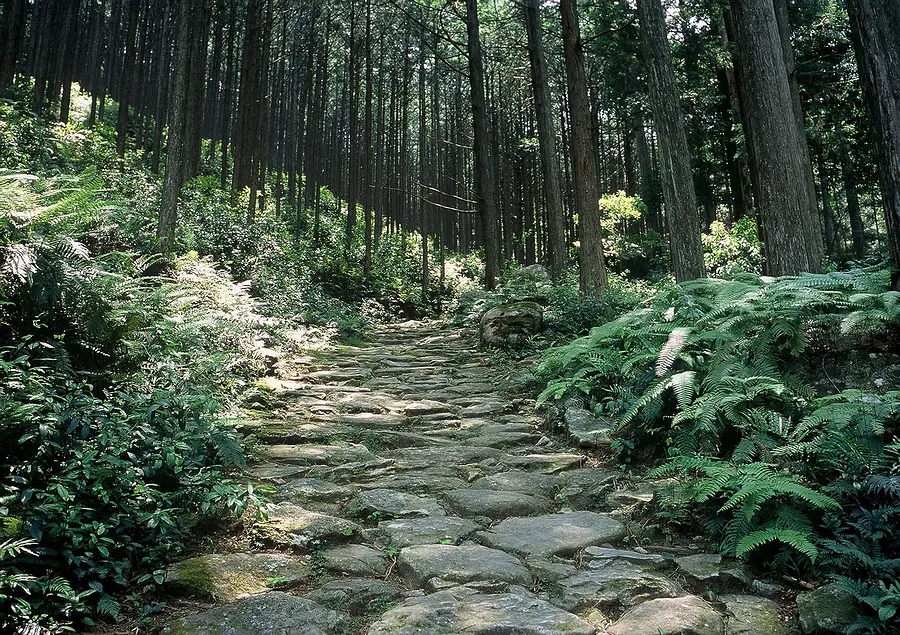
If you have any doubts, immediately check the audio guide!
GPS will display your current location, so select a nearby spot that interests you and play the audio guide. You can also check the text and photos along with the audio. Or, if you turn on the autoplay mode, the audio guide will automatically play when you approach a spot with a story.
Audio guideChapter 03|Cobblestone
The cobblestone road at Magose-togePass was built by the Kishu clan at the beginning of the Edo period and is 400 years old. The 2km cobblestone road from the trailhead to the pass remains as it was when it was first constructed.
The width of the road was set at 2.7 meters, considering the possibility of transporting important people in palanquins. The paving stones are large, flat, and laid in a folded manner. These stones are made of granite from the surrounding mountains and valleys, and are laid out according to the length of your steps to make it easier to walk on, so you can walk without stress.
I see. It is said that the stone pavement in front of you has maintained its appearance for over 400 years since the Edo period.
Ise Route has welcomed many pilgrims as a path of prayer since ancient times, so much so that there is a saying, "Seven times to Ise, three times to Kumano." It may have been designed with an emphasis on ease of walking to make the pilgrimage journey that continues in the future even a little easier. After listening to the audio guide and walking along these stone pavements again, I can imagine the breathing of people carrying palanquins, the sound of running footsteps, and people walking at their own pace aiming for the Kumano Sanzan of their dreams.
In addition, there is an audio guide at Magose-togePass that will help you enjoy Iseji more deeply, including stories about Jizo and spots you should take a detour to experience, so be sure to give it a try.
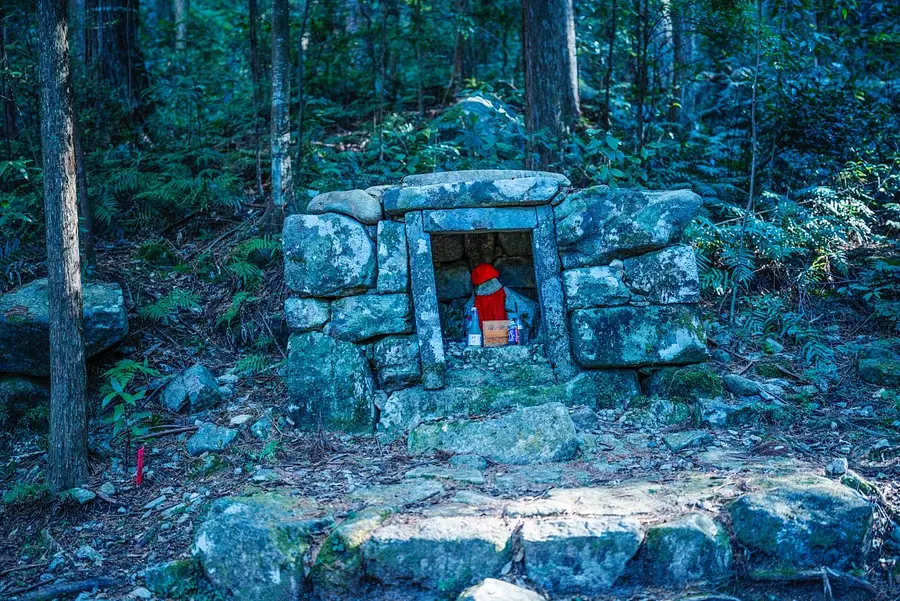
Night Crying Jizo (For more information…Audio guide “Magose-togePass” 04 | Night Crying Jizo and Ishibashi)
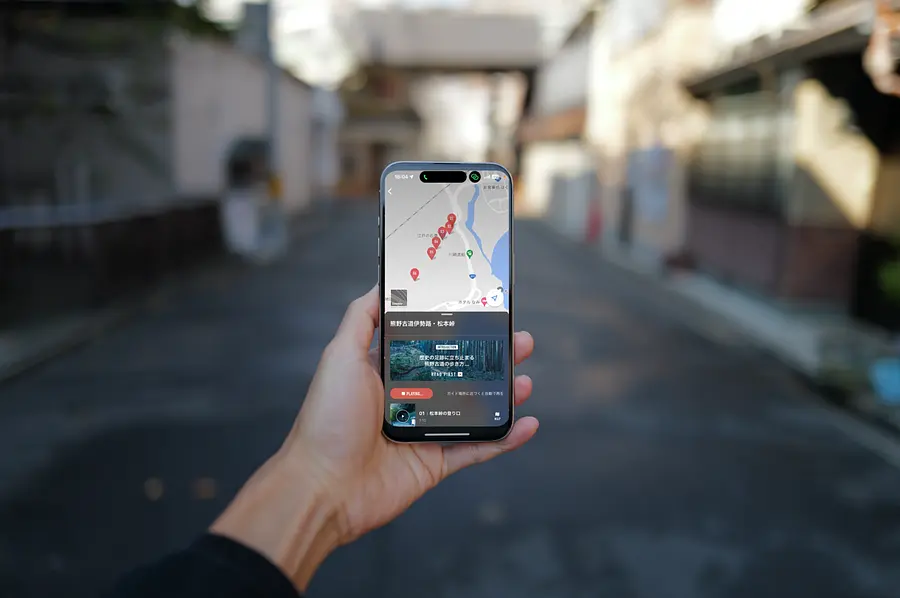
Walk along Matsumoto Pass with the people who built this road
Matsumoto Pass is the last pass from Ise Jingu to IseJingu Taisha, one of the three Kumano shrines, after passing many passes. Just walking on the cobblestone road surrounded by a beautiful bamboo forest is a pleasant walk, and since it's not at a high altitude, it's relatively easy to walk, so you can walk safely even with children.
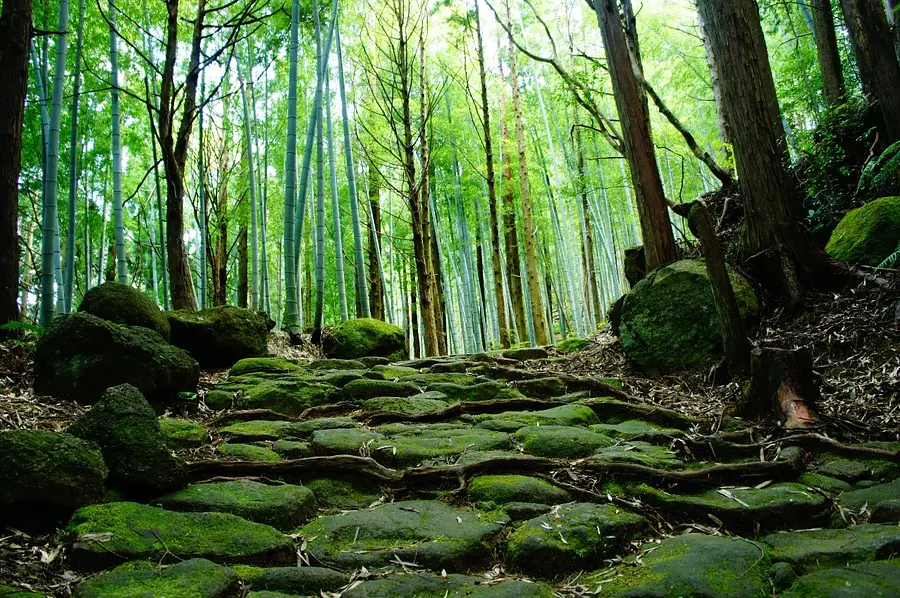
The area around the pass offers a beautiful view of Shichirimihama and the Kumano Sanzan mountain range, as well as `` Hana-no-Iwaya with a lion. You can stop by Shishiwao, a huge rock that appears to be roaring.

Shichirimihama and the Kumano Sanzan mountain range (for details...Audio guide "Matsumoto Pass" 08 | Shichirimihama and Kumano Sea seen from the gazebo)
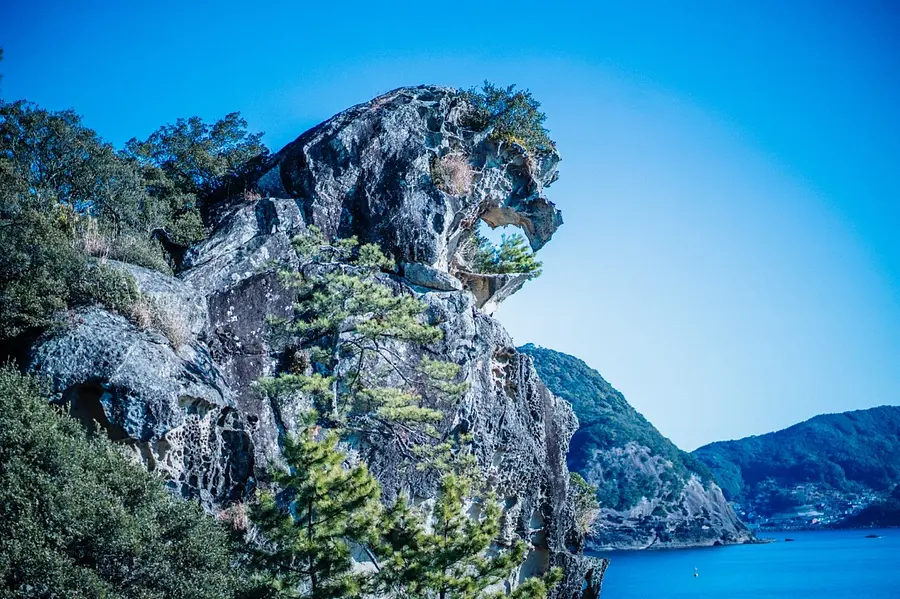
Shishiwao (For more information...Audio guide "Matsumoto Pass" EX2 | Shishiwao)
Learn the “story” of Matsumoto Pass that unfolds before your eyes
Matsumoto Pass has a beautiful cobblestone path similar to Magose-togePass.
Even if the old cobblestone roads look the same, the scenery you see will change as you walk along them with an audio guide and learn the differences between them.
Be sure to visit the site and experience how the history of cobblestones differs.
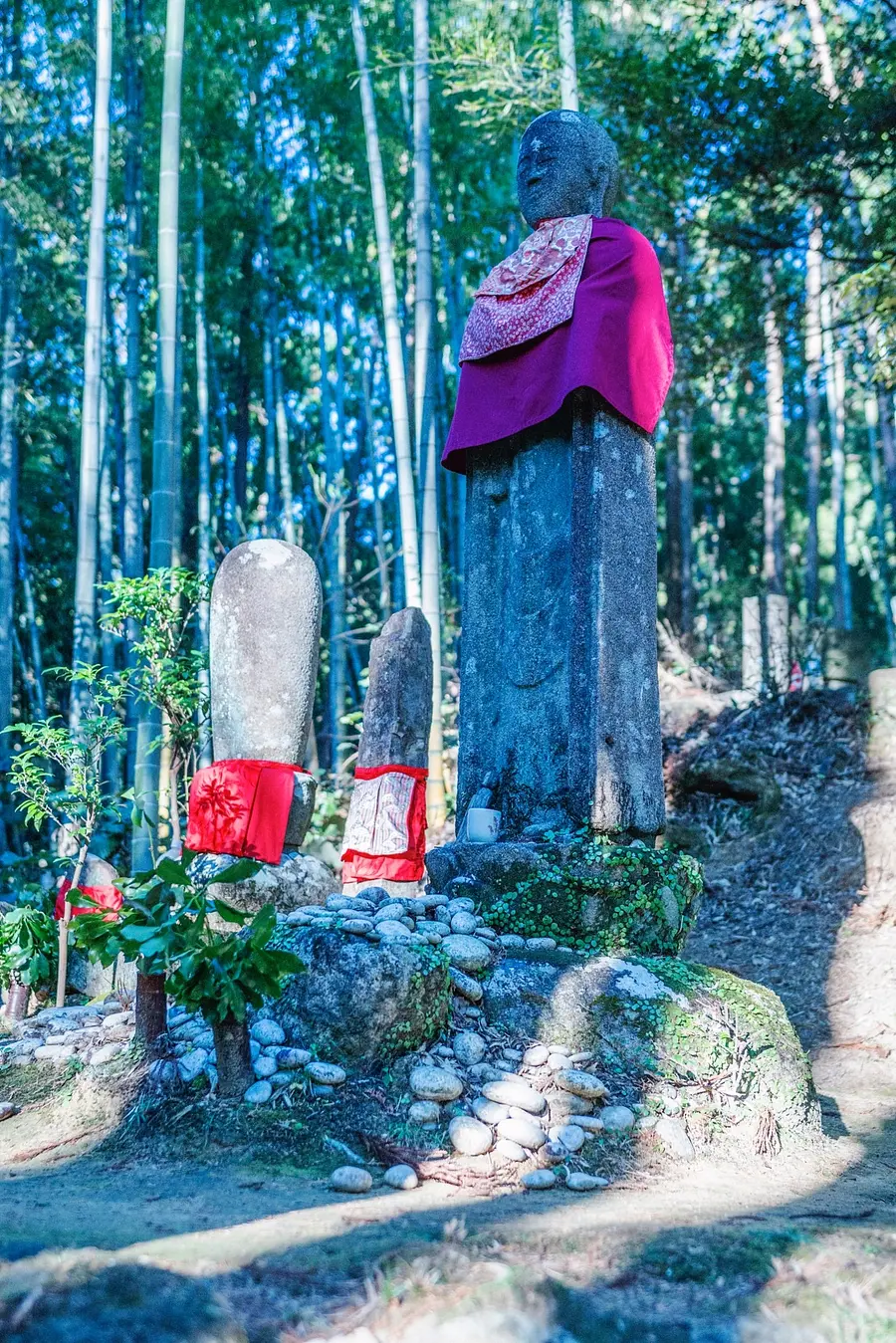
While I was enjoying the path through the stone pavement and bamboo forest, I suddenly came across a large Jizo statue that was almost life-sized.
As I approached the gentle-faced Jizo statue, the audio guide started playing automatically thanks to the GPS-linked autoplay mode. We recommend setting it to autoplay mode so you don't miss any highlights.
Audio guideChapter 07|Jizo and the tea house ruins
At the pass, there is a 170cm tall Jizo statue that was built around 400 years ago at the beginning of the Edo period, watching over travelers.
By the way, this Jizo statue has a hole. Why? This is also called the gun hole, and there is a legend that goes like this.
Once upon a time, a master gunner named Shinzaemon Ouma crossed Matsumoto Pass to the next town, and was on his way back. The sky was already dark and it was night. When Shinzaemon passed by this place, a large shadow appeared that was not there. ``It's a monster!'' Shinzaemon fired his gun at the shadow. However, that shadow does not budge. As I approached the statue, I discovered that the shadow was actually a Jizo statue that had been brought there by the villagers and erected here while Shinzaemon was away in the next town.
When you follow the audio guide and look at the feet of the Jizo statue, you will notice that there is a hole. A small hole said to have been made by a gun. There was such a legend about this hole. After Shinzaemon damaged the newly formed Jizo statue, how did he tell the villagers about this? As I thought about this and looked at the expression on this Jizo statue's face, I couldn't help but imagine that even though he was scolded, he forgave me and we had a funny story.
Perhaps the appeal of audio guides is that once you discover the history and stories that you might otherwise miss at first glance, you can feel closer to the area, and your trip can become your own personal memories.
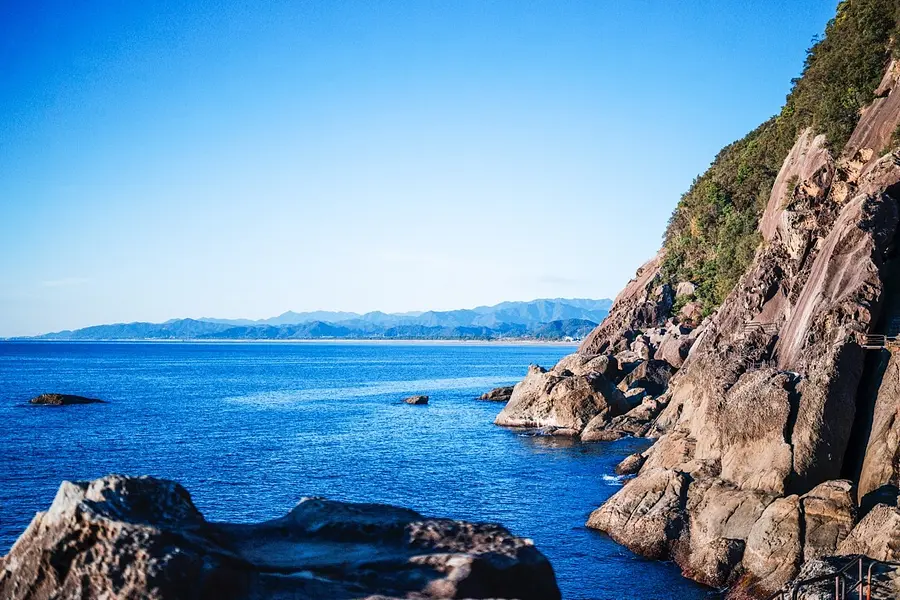
Onigajo (For more information...Audio guide "Matsumoto Pass" EX1 | Onigajo)
About access and parking to Magose-togePass and Matsumoto Pass
Magose-togePass (Kumano Kodo Iseji)
0597-89-6172
Please use the parking lot at Michi-no-eki Kaizan.
Click here for bus timetables (Google Maps) https://goo.gl/lKN8qQ
・About 30 minutes on foot from JR Kisei Main Line "Aiga Station"
・Approximately 10 minutes by bus from JR Kisei Main Line Owase Station to Washige bus stop
・Approximately 5 minutes by car from Kisei Expressway "Kaizan IC" via National Route 42
Matsumoto Pass/ Hana-no-Iwaya (Kumano Kodo Iseji Route)
0597-89-6172
・Several cars near the entrance on the Odomari side
[To JR Odomari Station, the starting point]
・About 3 hours by train from JR/Kintetsu Tsu Station
・About 10 minutes by train from KumanoCity Station on the JR Kisei Main Line
- Immediately by car south from Owase-Kumano Road "Kumano Odomari IC"
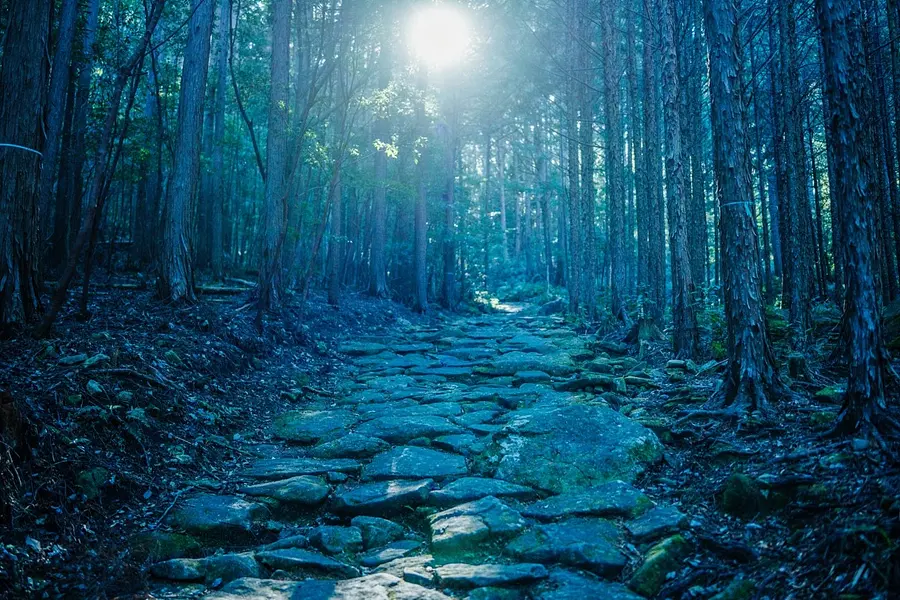
in conclusion
A pilgrimage where you walk and learn along the Kumano Kodo using an audio guide.
By having an audio guide that I could check whenever I was interested, I was able to learn about the attractions that I would not have noticed just by walking, and enjoy the pilgrimage in my own way while feeling the history first-hand.
As we celebrate the 20th anniversary of its registration as a World Heritage Site, why not experience Kumano Kodo Iseji in a way that you can't just see and feel?
Click here to install the app!
Magose-togePass
https://redirector.on-the-trip.com/redirect?spot_id=632
Matsumoto Pass

Related spots
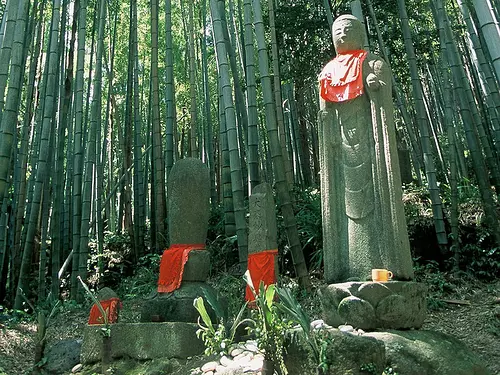
Matsumoto Pass/ Hana-no-Iwaya (Kumano Kodo Iseji Route)
HigashiKishu
KumanoCityA mountain pass that connects Odomari and Kimoto in Kumano City. Most of the road is still paved with stones, and it is located on the mountain side of the scenic Onigajo Castle. On the pass surrounded by bamboo forests, there stands a jizo that is said to have been shot with a gun, and from the plum grove on the way, you can overlook Shichiri Mihama. In addition, it includes a course from Matsumoto Pass to the Onigajo Observatory, so if you are confident in your physical strength, why not go through it? If you cross the Matsumoto Pass, there is no pass to Shingu, and it is a place where pilgrims in the past would have thought of the Kumano Hayatama Taisha Shrine, which sits in Shingu beyond Shichiri Mihama. ○ Course points: Edo cobblestones ~ Matsumoto Pass and Jizo ~ View from plum grove and Azumaya on the pass road, etc. ○ Walking time: about 3 hours ○ Distance: about 5km ○ Rest spot: Kinan Tour Design Center, etc. URL: Matsumoto Pass (HigashiKishuSightseeing Handbook) URL: Mie Prefectural Kumano Kodo Center [Matsumoto Pass] URL: Walking on the first Kumano Kodo Iseji URL: World Heritage Kumano Kodo Iseji (Mie Prefectural Government HP)
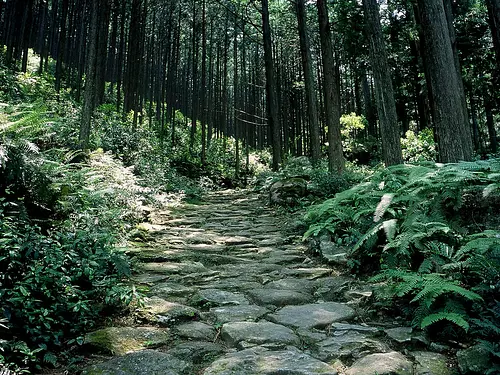
Magose-togePass (Kumano Kodo Iseji)
HigashiKishu
Kihoku Town, KihokuTownThe stone pavement, which is said to be the best on the Kumano Kodo Iseji, a popular mountain pass on the border of KihokuTown and OwaseCity, continues through a beautiful forest of Owase cypress trees. There are many historical sites such as the Night Cry Jizo that remain, and you can truly feel the atmosphere of the Kumano Kodo. From the pass, there are also hiking trails that lead to the peaks of Mt. Tengukura and Mt. Binishi, both of which offer spectacular views. Magoshi Park, located at the bottom of the mountain pass, is also a famous cherry blossom viewing spot, and is a popular spot visited by many people in spring. ○Course points: Michi-no-eki Kaizan - Night Cry Jizo - Ishibashi - Magoshi Ichirizuka - Karyoen Momotsu's Haiku Monument - Sakura Jizo - Magoshi Park - Owase Shrine, etc. ○Walking time: Approximately 2 hours and 30 minutes ○Distance: Approximately 5 km (Michi-no-eki Kaizan - JR Owase Station) ○Resting spots: Michi-no-eki Kaizan, Magose Park, Machikado Hot Center, etc. →For details, please see Magose-togePass Pass Course Walking Experience Report. URL: Magose-togePass (HigashiKishu Tourist Handbook) URL: Mie Prefectural Kumano Kodo Center [Magose-togePass] URL: First time walking the Kumano Kodo Iseji URL: World Heritage Kumano Kodo Iseji (Mie Prefectural Office HP) View this post on Instagram [Official] Post shared by Mie Tourism (Mie Prefecture Tourism Federation) (@kankomie) - May 17, 2019 11:32pm PDT



